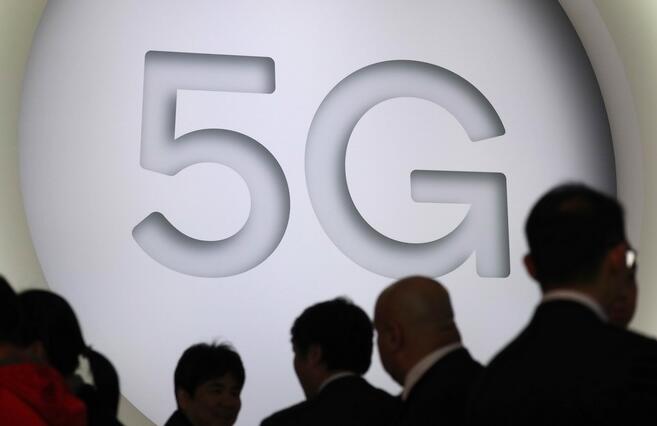5G is the fifth generation mobile phone mobile communication standard, also called the fifth generation mobile communication technology, foreign language abbreviation: 5G. It is also an extension of 4G. A few days ago, at the 2018 World Mobile Conference (MWC), China Mobile focused on 5G technologies, Internet of Things, digital homes, international business, and terminals, demonstrated the latest technologies and products at the conference, and announced that it will build a world scale in 2018. The largest 5G trial network. According to China Mobile’s latest 5G-scale experimental plan for 2018, the company will conduct 5G field tests in five cities in Hangzhou, Shanghai, Guangzhou, Suzhou and Wuhan this year. Each city will build more than 100 5G base stations; it will also be located in Beijing. , Chengdu, Shenzhen and other 12 cities to carry out 5G business and application demonstration. Another operator giant Unicom stated that it will conduct a large-scale 5G trial in 2018 and plans to conduct pilot tests in seven cities in Beijing, Tianjin, Shanghai, Shenzhen, Hangzhou, Nanjing and Xiong'an. Pre-commercial in 2019 and commercial in 2020. Shen Shaoai, deputy general manager of the China Telecom Technology Department, disclosed at the China Telecom Intelligent Terminal Technology Forum in July last year that it will conduct small-scale outfield trials in 2017-2018 and carry out scale and pre-commercial trials in the second half of 2018 to 2019. In the year 5G officially commercialized. On April 16, the U.S. Department of Commerce announced that it prohibited US companies from selling electronic technology or communication components to ZTE. The ban was valid for seven years. On the same day, the Wall Street Journal reported that the Trump administration began to consider countering China's cloud computing and other high technologies. Unfair restrictions in the service area. Sino-US trade friction is spreading to high-tech industries, and this is precisely the "pain point" of China's industries. On April 17, the Ministry of Commerce of the People's Republic of China issued a preliminary ruling on anti-dumping investigations of imported sorghum originating in the United States and decided to take temporary anti-dumping measures against imported sorghum originating in the United States. After the ban was announced, the stock prices of several major U.S. suppliers plummeted. Bloomberg pointed out that after China’s President Xi Jinping released a series of open market signals last week, the U.S.’s move against ZTE officially indicated that the trade frictions The core lies in the progress of a series of science and technology manufacturing fields such as "Made in China 2025". China’s continued investment in science and technology and its achievements have caused the science and technology giants to jealous of the United States. After the United States sanctions ZTE, China's investment in chips, artificial intelligence, and 5G will also be further strengthened. If the restrictions of Alibaba Cloud stay on paper for a while, ZTE's sanctions have already been reflected in the market. The US Department of Commerce’s ban document attached to the press release indicated that the US Department of Commerce official Richard Majauskas had signed the document on April 15. According to the ban, the 7-year ban on ZTE's export authority will take effect from the date of signing until March 13, 2025. On the 16th of the local time, the share price of ZTE’s several major US suppliers fell sharply. Among them, since 30% of total revenues in 2017 came from ZTE's procurement, Acacia Communications, the maker of optical network equipment, dropped 35.97%. Acacia issued a statement on the official website on the 16th, saying that it has been informed of the relevant ban by the US Department of Commerce, and the company has begun to take steps to suspend the affected transactions and is assessing the impact of the ban on the company. In addition, Oclaro's stock price of 18% from ZTE in 2017 fiscal year also plummeted by 15.18% on the same day, and Lumentum Holdings and Finisar also dropped 9.06% and 5.82% respectively. The impact of the ban also affects the mobile software system. BGR, a US mobile device information portal, stated in a comment issued on the 16th that the U.S. government’s move will tumble down the development of the smartphone business of ZTE and damage the entire Android ecosystem. BGR editor Chris Mills pointed out that due to the open source nature of Android, ZTE will continue to carry the operating system, but Google-related software services are in the category of software. ZTE’s mobile phones will no longer be able to continue to use Google’s products including Google’s app store. The most basic software service. “For a long time, Samsung has enjoyed a near-monopoly on Android’s flagship device, and the biggest challenge it faces is the rise of Chinese manufacturers. Once the best software and hardware are lost, ZTE is in competition. It will be a struggle," Mills wrote. "And the departure of an important manufacturer is a loss to all people in the Android ecosystem." According to Bloomberg analyst Shelly Banjo, the U.S. government’s direct ban on ZTE for seven years gave China more reason to increase its investment in science and technology, which in turn will accelerate the further competition between China and the United States in the field of science and technology. 5G is still the starting point of US restrictions on China. An analyst told the newspaper that ZTE is at the forefront of the 5G war, in addition to Huawei, which has been named by CFIUS and has suffered many setbacks in the United States. In 2017 alone, ZTE has made several important breakthroughs in the field of 5G. In February, ZTE released a full range of 5G pre-commercial base stations and launched Flexhual, a 5G bearer solution based on IP+Light. In October, ZTE cooperated with Italy's Wind Tre and Open Fiber to launch the first 5G pre-commercial network in Europe; in December ZTE has launched a 5G core product based on a service architecture. A detail of the Broadcom/Qualcomm merger and acquisition case that was halted by the U.S. government in March revealed the concern of the U.S. government in the field of 5G on challenges from Chinese companies. In a letter issued by Qualcomm on CFIUS on March 6th to both Broadcom and Qualcomm, CFIUS explained that the main reason for its interference in the acquisition was the fear that the merger would weaken Qualcomm’s competitiveness and make Huawei and others. Chinese companies have expanded their influence on the formulation of 5G standards. CFIUS said in the letter that in the 3G and 4G era, Qualcomm is the leader in rule development, and these advantages also make Qualcomm still the leading position in the development of 5G technology and standard setting, and the formulation of 5G standards will have a significant impact. To the United States, "national security." “This is crucial, because a weakened Qualcomm will leave China with a space that can expand its influence in the development of the 5G standard. As part of its efforts to build 5G technology, Chinese companies including Huawei are included. , has increased their participation in the 5G standardization work.†The letter wrote, “Given the well-known national security concerns related to Huawei and other Chinese communications industry companies, China’s dominant position in the 5G field will be The national security of the United States has a huge negative impact." The market generally believes that after the United States sanctions ZTE, China's investment in chips, artificial intelligence, and 5G will be further strengthened. The above-mentioned analysts told this reporter that in 2016, Huawei's Polar coding scheme was selected as the 5G short-code signaling standard, which made China stand firm on the basis of communication coding, and the 3rd Generation Partnership Project (3GPP) determined the channel of the 5G eMBB scenario. The coding technology solution uses the Polar code as a control channel scheme. For Chinese operators, only when they are selected to adopt a solution can they play a key role in their own industry development. In the future, they will have more advantages in investing in chips, components, and equipment. Product development has more impact. In addition, Huawei will launch 5G chips and gradually break through key links such as core chips and high-frequency devices (in the future, it will gradually master 5G terminals, chips, and components, etc.), which will help support the development of 5G technologies and the establishment of an industrial ecological chain. It is very difficult to climb the peak of 5G technology. Both domestic and foreign companies are actively competing. At present, companies such as Qualcomm, Huawei, ZTE, and Ericsson are at the forefront. Qualcomm began to research and develop 5G in advance from 2006. Qualcomm has surpassed many communications companies in terms of capital investment and patented technology reserves. Qualcomm’s accumulated R&D investment in the field of communications technology has already exceeded 41 billion U.S. dollars. In the era of 2G, 3G, and 4G, Qualcomm is one of the major participants in technical standards, and has accumulated a large number of patented technologies. These are the cornerstones of the International Telecommunication Union's efforts to create a global standard in the 5G era. At present, Qualcomm has led 5G development in all aspects from chips, technologies, prototypes, and engineering networks. Qualcomm has continued its past 3G and 4G technologies, experience and accumulation into 5G R&D, and has accumulated a lot of results. 5G Research and development funds have also been invested in billions of dollars. In the field of 5G, Qualcomm has three advantages. First, Qualcomm has long been in a leading position in the field of OFDM (Orthogonal Frequency Division Multiplexing, a technology of multi-carrier modulation) and chips, and can support Qualcomm's standardization participation and commercialization in the 5G field. Second, Qualcomm can complete the end-to-end prototype from the terminal to the base station to the core network, promote the verification of system performance and functionality, promote standardization, support the joint demonstration of manufacturers and operators, and drive the development of the industry. Third, Qualcomm has two important teams. One is an R&D team that focuses on early technology, and the other is a chip product development team. After the chip is connected to the manufacturer's base station and core network, Qualcomm can support operators to optimize performance from end to end and maximize the value of the carrier's network. Ericsson, another communications giant, first announced the delivery of the 5G NR wireless system in August 2016. In June, it released the 5G plug-in, becoming the first equipment supplier to provide all components of the 5G access network. Ericsson’s latest 5G NR air interface has a peak throughput of over 25 Gbit/s. Ericsson has introduced end-to-end network slicing technology in quasi-5G networks to achieve on-demand distribution of network capabilities and dynamic optimization of network connectivity. At the same time, cloud wireless access network technology has been introduced to meet the flexible deployment requirements of different scenarios. Huawei started to develop 5G in 2009. Huawei said that it will invest 600 million US dollars to develop 5G. In the first phase of the 5G technology R&D test of China's IMT-2020 (5G) promotion group, Huawei completed the large-scale antenna, new multi-access (SCMA) new multi-carrier (f-OFDM), advanced tone-to-code (polar 10 test items such as code, full-duplex, and high-band communications (73GHz). ZTE completed the testing of four technologies such as large-scale antennas. Genuine Flip Cover Leather Case Genuine Flip Cover Leather Case,Cover Leather Case,Flip Cover Leather Case,Genuine Leather Case Guangzhou Jiaqi International Trade Co., Ltd , https://www.make-case.com




5G commercial time
March 21, 2023